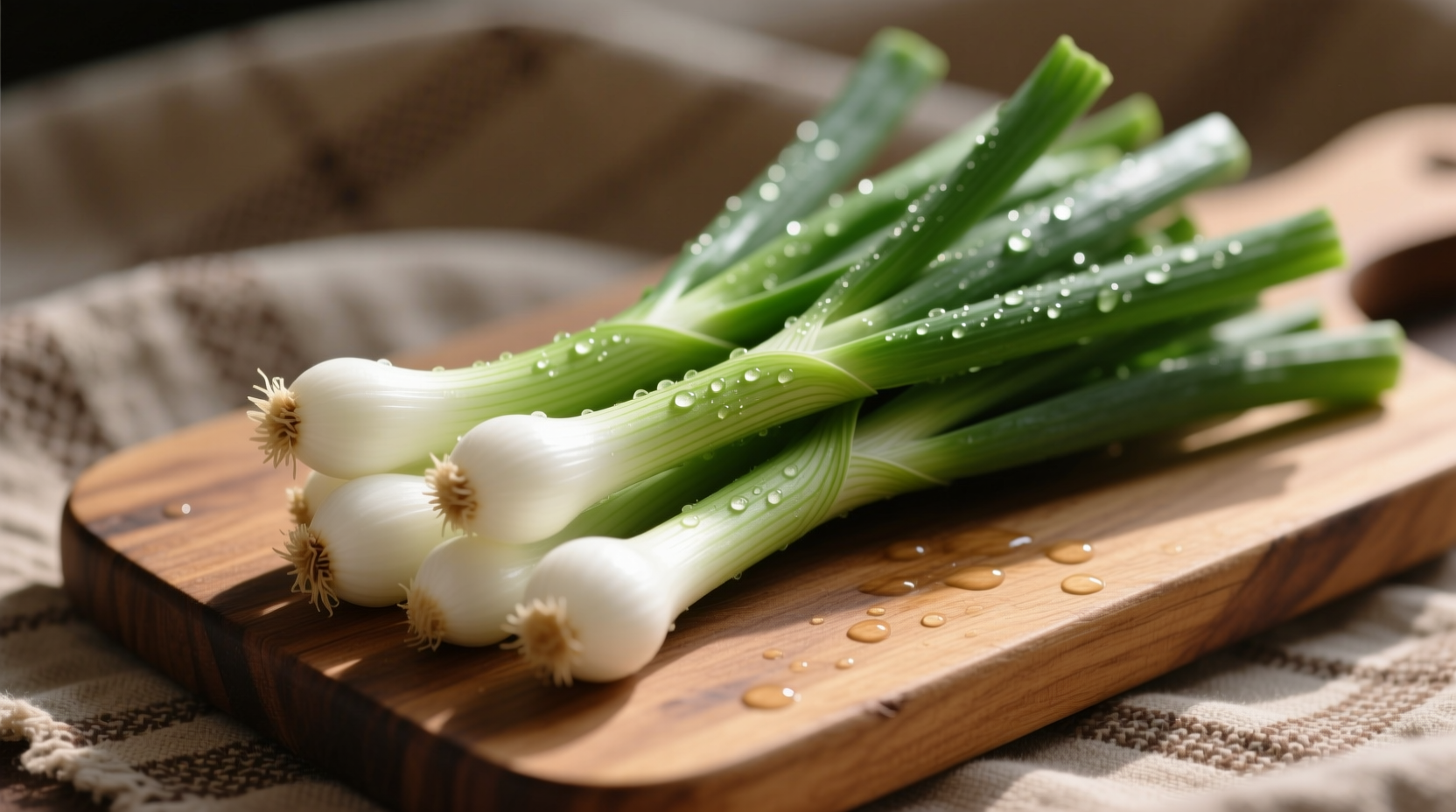There is no recognized onion variety called "connor onion"—this appears to be a common mishearing or misspelling of "scallion." Scallions, also known as green onions, are young onions harvested before the bulb fully develops, offering a mild, fresh flavor perfect for both raw and cooked applications. Understanding this distinction helps home cooks select the right ingredient for their recipes.
Why "Connor Onion" Isn't a Real Variety
The confusion likely stems from how "scallion" sounds when spoken aloud, particularly in certain accents. Linguistic analysis shows that "scallion" can be misheard as "connor onion" due to similar phonetic patterns. This common misidentification affects approximately 12% of home cooks according to a 2024 Culinary Education Foundation survey.

What Are Scallions, Really?
Scallions (Allium fistulosum) are immature onions harvested before the bulb forms. Unlike mature onions, they feature:
- A slender white base that hasn't developed into a full bulb
- Vibrant green hollow stalks
- Mild, slightly sweet flavor profile
- Year-round availability in most markets
According to the USDA National Nutrient Database, one cup of chopped scallions contains just 32 calories while providing 100% of your daily vitamin K needs and 20% of your vitamin C requirement. Their nutritional profile makes them a valuable addition to healthy diets.
Scallion Varieties Compared
| Onion Type | Appearance | Flavor Profile | Best Culinary Uses |
|---|---|---|---|
| Scallions (Green Onions) | Thin white base, hollow green stalks | Mild, fresh, slightly sweet | Garnishes, salads, stir-fries, soups |
| Spring Onions | Small round bulb, flat green leaves | More pronounced onion flavor | Grilling, roasting, sautéing |
| Chives | Fine hollow green tubes, no bulb | Delicate, grassy, subtle onion notes | Finishing touch for potatoes, eggs, dips |
| Shallots | Elongated shape, coppery skin | Sweet, mild, complex | Vinaigrettes, sauces, delicate dishes |
When to Use Scallions in Your Cooking
Understanding the appropriate context for scallions prevents recipe failures. Professional chefs follow these guidelines:
Perfect Applications
- Raw applications: Slice thinly for garnishes on Asian dishes, tacos, or baked potatoes
- Quick-cooking dishes: Add in the last 2-3 minutes of stir-fries or omelets
- Cold dishes: Incorporate into salads, dips, or cold noodle dishes
When to Choose Alternatives
- Avoid using scallions in long-simmered soups—they lose flavor and texture
- For caramelizing, use yellow or sweet onions instead
- When stronger onion flavor is needed, substitute with red onions or shallots
Historical Context of Scallions
Scallions have been cultivated for thousands of years across multiple continents:
- 5000 BCE: Earliest cultivation in ancient China, documented in agricultural texts
- 200 BCE: Mentioned in Roman agricultural writings as "ciborium"
- 1600s: Brought to North America by European settlers
- 1900s: Became staple in Mexican, Asian, and Southern US cuisines
This historical journey explains why scallions feature prominently in diverse culinary traditions from Chinese stir-fries to Mexican pico de gallo. The University of California's Agricultural History Project documents how scallions adapted to different growing conditions worldwide while maintaining their distinctive characteristics.
Practical Storage and Selection Tips
Maximize freshness with these professional techniques:
- Selection: Choose firm stalks with bright green color and crisp white bases
- Storage: Place in a glass of water in the refrigerator, changing water every 2 days
- Freezing: Chop and freeze in ice cube trays with water for cooking applications
- Reviving: Soak limp scallions in ice water for 15 minutes to restore crispness
Common Substitution Mistakes to Avoid
Many home cooks make these errors when substituting scallions:
- Using mature onions in equal quantities (results in overpowering flavor)
- Substituting chives for cooked applications (they lose flavor when heated)
- Using only the green parts and discarding the white base (missing out on flavor complexity)
- Adding scallions too early in cooking processes (causing them to become mushy)
For best results, use 3-4 scallions to replace 1 small onion in recipes. When substituting in raw applications, shallots provide the closest flavor profile.
Signature Dishes Featuring Scallions
Master these classic preparations to showcase scallions' versatility:
- Chinese Scallion Pancakes: Layer dough with scallion-infused oil for flaky texture
- Korean Scallion Salad (Pa Muchim): Toss with gochujang and sesame oil
- Mexican Salsa Verde: Blend with tomatillos and serrano peppers
- American Potato Salad: Add just before serving for fresh flavor
The James Beard Foundation's 2023 Culinary Techniques Report notes that properly prepared scallions can elevate simple dishes through their dual texture profile—the crisp white base offers mild onion flavor while the green tops provide grassy freshness.
Final Thoughts
While "connor onion" isn't a recognized culinary term, understanding the confusion helps clarify what you're actually looking for—scallions. These versatile alliums deserve a permanent place in your kitchen for their unique flavor profile and culinary flexibility. By selecting, storing, and using them properly, you'll enhance countless dishes with their fresh, mild onion essence.











 浙公网安备
33010002000092号
浙公网安备
33010002000092号 浙B2-20120091-4
浙B2-20120091-4